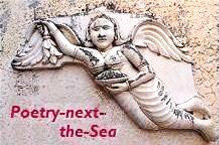Lewis-Carroll-next-the-Sea
By Thea Lenarduzzi
How did you celebrate International Owl and Pussycat Day on Saturday? Across Britain, people gathered to celebrated the 200th aniversary of the birth of Edward Lear, with recitals and puppet shows, and, worryingly, “animals and nonsense” promised at Knowlsey Safari Park (and entertainment of a safer, academic sort yet to come).
Others got their fix of nonsense elsewhere. I found mine in a small community hall in Wells-Next-the-Sea, Norfolk, on the final day of the yearly poetry festival. The occasion was Lewis Carroll’s unbirthday party (as indeed every day of the year, except January 27, must be), and Dame Gillian Beer led the celebrations with readings from her edition of his collected poems, due to be published in September. (We must speak of the “Collected” rather than “complete” poems, she explains, because “they keep popping up like mushrooms”.) So, while we enjoyed a cup of tea and a biscuit for the wonderfully no-nonsense price of 50p, Beer urged us to look beyond the Alice books, and into the further wilds of Carroll’s – and our – imaginations.
The earliest poems of Lewis Carroll (born Charles Dodgson in 1832) share the verbal intensity, and many of the characters and episodes, of his mature writings. Tracing the genealogy of the poet’s fancy, Beer drew on an exchange of letters between a seven-year-old Charles and his father, who had been called to Leeds on Church business. In response to the boy’s request for “a file, a screwdriver and a ring” – for reasons unspecified – Archdeacon Dodgson declared that he would leave no man or cat alive in the city until his son’s demands had been met: ducks would jump into teacups, children would hide in the mouths of their mothers, quaking in attics, and the Mayor himself would be packed into a suitcase and covered in custard, until the whole resembled a layered sponge cake.
The “cheerful violence” and logical perversions of Carroll’s compositions are evidently rooted in this happy hecticism of family life. By the age of twelve he was already dedicating collections to his numerous siblings. One such project, included in Beer’s edition, is Useful and Instructive Poetry, in which each poem presents a moral: “Never stew your sister”, about a quarrelsome brother who wishes to make an Irish stew of dubious provenance, is a favourite; another, “My Fairy” – in which a child, frustrated by the didactic suffocations of youth, begs “What may I do?” – ends simply “You mustn’t.”
But Carroll’s are not all “funny little poems”, Beer explained. The melancholy of “Solitude”, for example, is surprising:
“I'd give all wealth that years have piled,
The slow result of Life's decay,
To be once more a little child
For one bright summer-day.”
Written in response to the sudden death of his mother, its tone is serious and elegiac – a lament for lost youth composed by a twenty-one-year old, only two days into his undergraduate course in Mathematics at Oxford. This is the first poem to be attributed to “Lewis Carroll”.
Many poems, especially from his lesser known novel in two parts, Sylvie and Bruno (1889) and Sylvie and Bruno Concluded (1893), are particularly sardonic and disturbing. Their language is bewildering; mathematical theorems and secret codes disorientate the reader and Carroll offers no solutions to the riddles he poses. “I found I just could not follow him there”, admitted Beer.
Not even Carroll stuck to his routes steadfastly, cutting and changing his verse ad nauseam (let's recall the Bellman's map – a blank sheet of paper – in The Hunting of the Snark). “Words always mean more that the writer can possibly know”, Carroll said, and he willed people to take a different approach. Perhaps one of Beer’s most generous points yesterday was her mention of Carroll’s scrapbook. Kept between 1855 and 1872, it is now fully searchable online at the Library of Congress: http://international.loc.gov/cgi-bin/ampage . Who knows where your browsing may lead . . . .
Peter Stothard's Blog
- Peter Stothard's profile
- 30 followers




